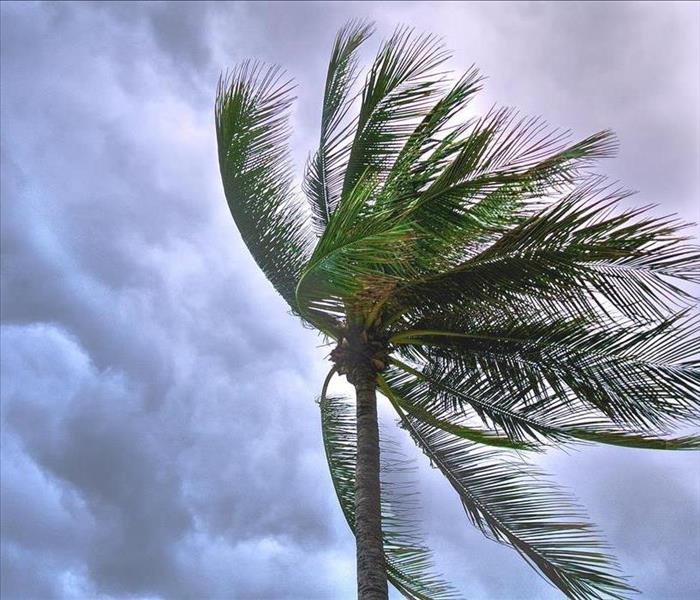How Storms Can Affect Your Residential Property in Southern California
2/24/2023 (Permalink)
Storm surge
The National Oceanic and Atmospheric Administration (NOAA) describes a storm surge as a rise in seawater level that's caused by a storm. It occurs when powerful winds from a hurricane, tropical storm or even a winter storm push ocean water ashore. This creates a rise in seawater level that's greater than the predicted tide.
A storm surge can create a dangerous situation for you and your family, so it's important to be prepared. Consider creating an evacuation plan and packing an emergency "go bag" ahead of time so you can quickly depart if a storm surge forces you to evacuate.
Regardless of what's predicted, it's important not to underestimate the potential danger of a storm surge. The NHC says storm surges can cause water levels to rise in a matter of minutes, leaving you little time to seek higher ground. Extreme flooding stemming from a storm surge can force major evacuations and may leave behind damage at your home. This damage may include foundation cracks, punctured gas lines, flooded appliances and electrical issues, says Ready.gov.
Wind
Early in the season, the high-pressure air in the Great Basin starts out warmer, so the addition of compressional heating can make for winds that feel hot like a hair dryer. Later in the season — late fall and winter — the jet stream comes farther down out of Canada and feeds much colder Arctic air into the interior West. That colder, denser air can generate stronger winds, even though they may not be as oven-hot as in the early fall. These later-season winds are more likely to have upper-level support — meaning winds higher in the troposphere may influence the winds at the surface through a sort of chain reaction. The cooler, denser air helps drive those winds aloft to the surface because of subsidence or sinking, Miller adds.
Downslope Winds?occur when warm/dry air descends rapidly down a mountain side. These are common on the east side of the Rocky Mountains, called Chinook Winds. These winds can blow over 40 mph, and can occur in sudden gusts that are even stronger, which can make driving hazardous. In addition, their dry conditions increase the risk of wildfires in the area.
Downslope Winds occur when warm/dry air descends rapidly down a mountain side. These are common on the east side of the Rocky Mountains, called Chinook Winds. These winds can blow over 40 mph, and can occur in sudden gusts that are even stronger, which can make driving hazardous. In addition, their dry conditions increase the risk of wildfires in the area.
Rain
For the first time since October, drought-plagued California was doused with heavy rain and snowfall from Dec. 12-15. Even Southern California got to join in the party, with Santa Barbara and the rest of the South Coast averaging 2 inches of rain at the water’s edge and upwards of 5 inches in the mountains. San Marcos Pass, traversed by Highway 154, received more than 8 inches of rain from the storm.
A vigorous storm system moved into the Southland on Monday, delivering much-needed rain and high-elevation snow to the drought-stricken region — along with lightning, flash floods and road hazards — but it wasn’t enough to make more than a dent in the ongoing drought.
These bands occur globally and are responsible for moving much of the water vapor that flows outside of the tropics, especially on the west coast of the U.S. and in northern Europe. When they come into contact with a landmass, atmospheric rivers will often release their vapor, resulting in rainfall and snowfall at higher elevations.
What to do when you get a warning about a storm.
Practice Your Plan: Conduct a family severe thunderstorm drill regularly so everyone knows what to do if a damaging wind or large hail is approaching. Make sure all members of your family know to go there when severe thunderstorm warnings are issued. Don't forget pets if time allows.
A storm warning indicates that meteorologists have already observed severe conditions. If you hear that a storm warning has been issued, it means potentially dangerous weather is imminent in or near your location. Depending on the type of weather warning, take appropriate action as quickly and safely as possible.
Also check your furnace and change your filter. While this won’t mitigate storm damage, it can make weathering the storm more comfortable. Also take this opportunity to service your garage door opener by lubricating the chain or screw drive and checking the tension on the chain. Change the batteries in the electronic opener, too, to minimize the chances that your loved ones will have to operate the door manually during a storm.
What to do if a storm hits.
Start by discussing what could happen and what you should do at home, at school or at work if a severe storm strikes. To be prepared, make a list of what needs to be done ahead of time. Store important family documents, such as birth certificates, passports, wills, financial documents, insurance policies, etc. in waterproof container(s). Identify an appropriate out-of-town contact that can act as a central point of contact in an emergency.
When a winter storm hits, stay indoors. If you must go outside, dress for the weather. Outer clothing should be tightly woven and water-repellent. The jacket should have a hood. Wear mittens – they are warmer than gloves – and a hat, as significant body heat is lost through the head.
After the Storm
1. Return home only when authorities say it is safe.
2. Be aware of areas where floodwaters have receded and watch out for debris. Floodwaters often erode roads and walkways.
3. Do not attempt to drive through areas that are still flooded.
4. Avoid standing water as it may be electrically charged from underground or downed power lines.
5. Photograph damage to your property for insurance purposes.






 24/7 Emergency Service
24/7 Emergency Service
